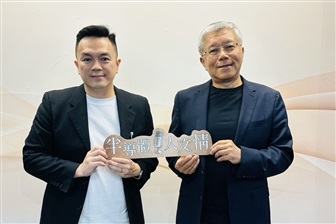Japan is preparing a major expansion of state support for advanced semiconductors and artificial intelligence, with the Ministry of Economy, Trade and Industry (METI) set to nearly quadruple related funding from fiscal year 2026, starting in April 2026.
Memory maker Winbond Electronics has recently continued to expand capital expenditures by increasing capacity for 16nm and DDR4 DRAM. As inventories of legacy DDR3 products decrease, DDR4 will officially become Winbond's main product in the first half of 2026. The company's new 8Gb DDR4 products manufactured on its in-house 16nm process have recently passed customer qualification smoothly and are expected to enter mass production and shipment in the first to second quarters of 2026.
MediaTek and DENSO said they have entered into a joint development effort to create a custom automotive system-on-chip (SoC) for advanced driver-assistance systems (ADAS) and in-vehicle cockpit applications, reflecting growing demand for higher-performance and safety-compliant computing platforms in next-generation vehicles.
Egis Technology Group recently held an investor briefing to present its operational outlook for 2026, focusing on a dual approach to cloud AI and edge AI development. The group aims to deliver tangible outcomes by 2026 and 2027 through leveraging the strengths of its subsidiaries in various AI-related technologies.
The US government has decided not to impose additional semiconductor tariffs on China for the next 18 months, despite concluding that Beijing's state-led chip industry policies involve unfair subsidies and market distortion. DIGITIMES analyst Luke Lin stressed in a recent podcast that this should not be misinterpreted as a softening stance toward China.
ChenFull Precision president CM Lai stated during an earnings call on December 24 that looking ahead to 2026, strong growth momentum in both the semiconductor and defense sectors is expected. For ChenFull, semiconductor business revenue is projected to rise by 20% to 30%, while the defense business is also showing robust potential with opportunities to deliver double-digit growth. Overall gross margin is anticipated to return to around 30%.
SK Hynix is scheduled to deliver final samples of its next-generation high-bandwidth memory to Nvidia in early January 2025. This comes as the South Korean chipmaker nears a February target for mass production of HBM4. The delivery follows a revised wafer run intended to resolve technical issues identified during earlier integration testing, according to DealSite. It marks a critical step in supporting Nvidia's next wave of artificial intelligence accelerators.
As demand for artificial intelligence (AI) semiconductors continues to surge, the market for glass substrates, which are widely regarded as a critical material for next-generation advanced packaging, is gaining momentum. South Korean companies such as Samsung Electro-Mechanics (SEMCO) and LG Innotek are gearing up to compete for leadership in this emerging segment.
Microcontroller (MCU) maker ENE Technology has officially entered the drone industry, partnering with Taiwan's HY Tech, Aeroprobing, and Egis to integrate communications, vision modules, and AI image processing and computing technologies. The company also established a new business unit staffed with drone experts to compete in the customized drone IC market.
J.K. Wang, a veteran leader in the semiconductor industry and former COO of TSMC, shared insights on TSMC's large-scale wafer fab mass production during his first media interview since retirement. Speaking on DIGITIMES' IC Broadcasting podcast, Wang highlighted how TSMC's success stems from meticulous teamwork rather than any single individual.
The semiconductor industry is increasingly central to national strategies as the US and China intensify state-led investments amid growing tech geopolitical tensions. The US CHIPS and Science Act and China's multibillion-yuan semiconductor funding illustrate a resurgence of state capitalism in high-tech sectors, reshaping global supply chains and industrial competition.
More coverage



